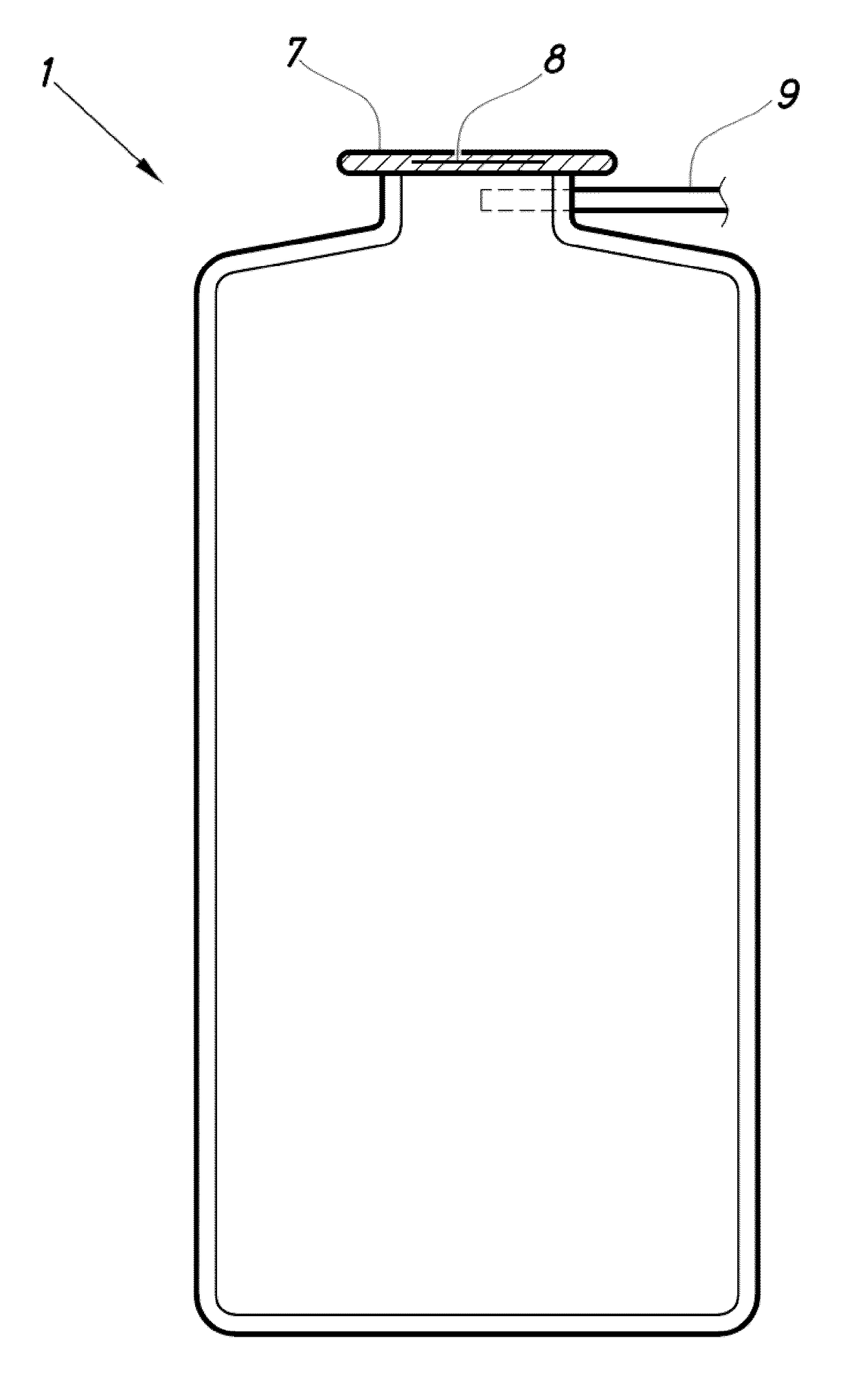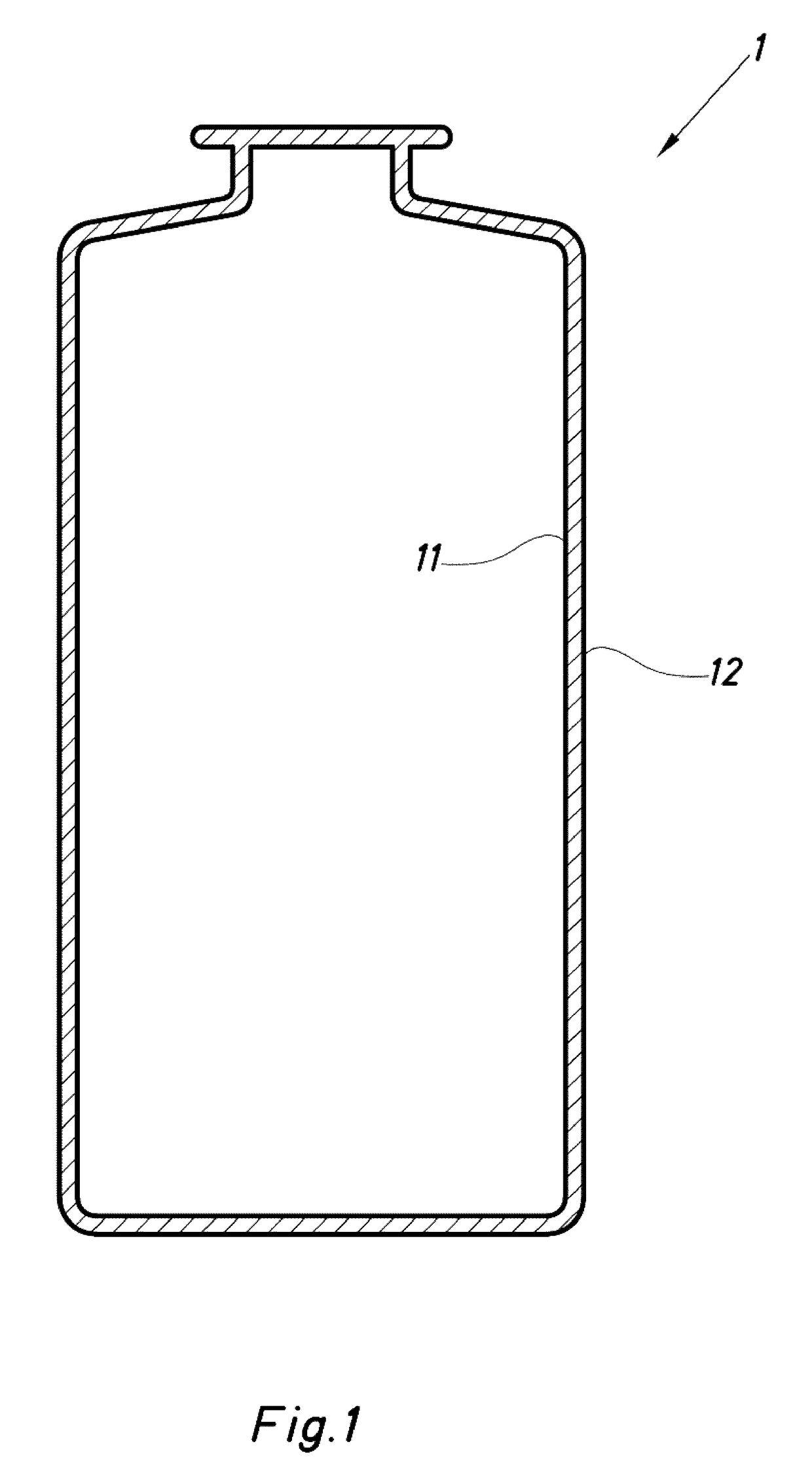Container for blood derivative products
- Summary
- Abstract
- Description
- Claims
- Application Information
AI Technical Summary
Benefits of technology
Problems solved by technology
Method used
Image
Examples
Embodiment Construction
[0052]FIG. 1 shows a container -1- of hermetically-sealed plastic which is preferably a plastics bottle for blood derivative products such as, for example, red blood cells, platelets or, more preferably, plasma. This container -1- is hermetically sealed and is bounded by an internal surface -11- and an external surface -12-.
[0053]According to this invention, this container -1- is characterised in that it comprises an RFID inlay -8- between internal surface -11- and external surface -12- as illustrated in FIG. 5.
[0054]According to a preferred embodiment of the invention, this RFID inlay -8- is of a type operating at Ultra High Frequency (UHF), which preferably corresponds to a range of frequencies between 840 and 960 MHz. Preferably, RFID inlay -8- according to this invention is of the UHF type and can conduct communications in both the near field (using the magnetic component of the electromagnetic wave) and the far field (using the electrical component of the electromagnetic wave)....
PUM
 Login to View More
Login to View More Abstract
Description
Claims
Application Information
 Login to View More
Login to View More - R&D
- Intellectual Property
- Life Sciences
- Materials
- Tech Scout
- Unparalleled Data Quality
- Higher Quality Content
- 60% Fewer Hallucinations
Browse by: Latest US Patents, China's latest patents, Technical Efficacy Thesaurus, Application Domain, Technology Topic, Popular Technical Reports.
© 2025 PatSnap. All rights reserved.Legal|Privacy policy|Modern Slavery Act Transparency Statement|Sitemap|About US| Contact US: help@patsnap.com



